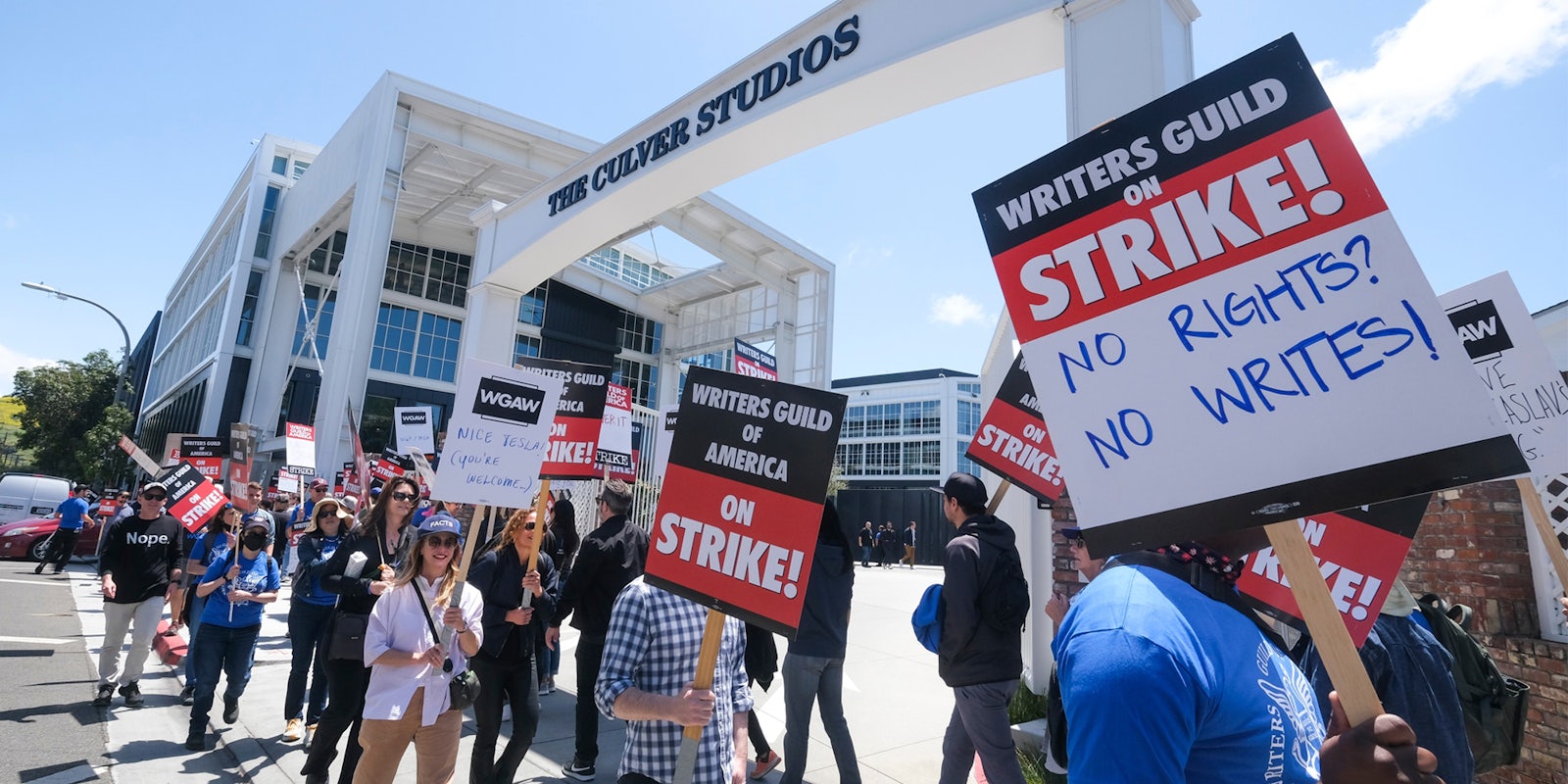There’s a lot of confusion right now over how people can support the film industry strikes. Should we boycott new movies? Is it okay to post fanfic, fanart, or cosplay pics for current TV shows? What actually counts as scabbing?
After a few days of increasingly muddled online discourse, the actors’ guild SAG-AFTRA has clarified its guidelines in Variety. Among other things, SAG confirms that entertainment reporters and film critics can continue working as normal. Journalists are not on strike, and they don’t work for the studios.
Also, SAG and the WGA aren’t asking for a consumer boycott. So you can keep going to the movies.
The guidelines for influencers—and the definition of “influencer”—are a little more complicated. They hinge on the issue of promoting a project where workers are currently on strike:
“Most influencers are non-union and are not subject to any strike rules. But some of them do work under the SAG-AFTRA Influencer Agreement, or may want to someday. And those influencers have been asked not to promote struck work (i.e. movies and TV shows), either for pay or “organically.””
As Vanity Fair put it, “if you see, say, a Kardashian posting about their favorite Netflix or HBO scripted series either organically or in a paid capacity, that’s a no-go during the strike.”
Should cosplayers and fan creators participate in the strike?
Much of the conversation around this “influencer” issue has focused on fandom, and the ambiguous line between fanmade media and free marketing.
For instance, a TikToker paid to promote a Barbie event is clearly relevant to SAG’s guidelines—especially if they’re a member of SAG-AFTRA. But what about a fan artist posting Barbenheimer fanart for fun? This may act as free promotion for Barbie and Oppenheimer, but the fan artist isn’t scabbing or crossing a picket line.
To complicate matters further, a handful of viral tweets claimed that cosplay counts as promo, and is therefore discouraged by SAG. With Comic-Con set to begin on Thursday, this sparked concerns in the cosplay community. But according to SAG-AFTRA’s official guidance, cosplay is fine unless you’re a SAG member promoting struck work. For most people, it’s a hobby.
What about fanfic?
Similarly, some fans suggested that people should stop posting fanfic for struck projects.
Neither SAG-AFTRA nor the WGA have discouraged fanfic, but you could argue that fanfic helps to promote its source material. Then again, a lot of fanworks act in opposition to their original canon. And there’s a long history of fan culture existing as a non-commercial, subversive force.
Ultimately, fans can argue all day over the ethics of posting fanworks related to corporate media like Marvel or Barbie. And that’s a problem in itself.
While these arguments stem from a desire to show solidarity, they focus on fandom rather than the strikers themselves. They prioritize niche moral debates about people’s hobbies, which are only tangentially relevant to the issue of film workers striking for equitable pay.
When it comes to the topic of scabbing or crossing picket lines, the most urgent conflicts involve workers within the film industry. For instance, non-union actors or writers accepting work on struck projects. Or crewmembers crossing physical pickets outside film sets. Or industry insiders like Glee creator Ryan Murphy engaging in strikebreaking activity.
Outside the industry, the best way to support the strike is to donate to strike funds, promote the strike’s messaging on social media, and avoid spreading misinformation.



